Just outside LA, I stumbled into Old Town Pasadena—a place where history, elegance, and vibrant culture just sort of collide. The old streets, quirky shops, and that famous Rose Parade make it a charming escape from the city’s usual rush.
You can wander through classic architecture, grab a bite at a local spot, or catch a glimpse of the Rose Parade tradition that’s shaped Pasadena’s vibe for over a century.
As I wandered along Colorado Boulevard, old brick buildings, luxury boutiques, and lively cafés surrounded me. The blend of modern life and preserved history really makes Old Town pop.
Pasadena’s deep ties to the Rose Parade give the district a festive, community-driven feel every year. There’s always something in the air—maybe anticipation, maybe nostalgia.
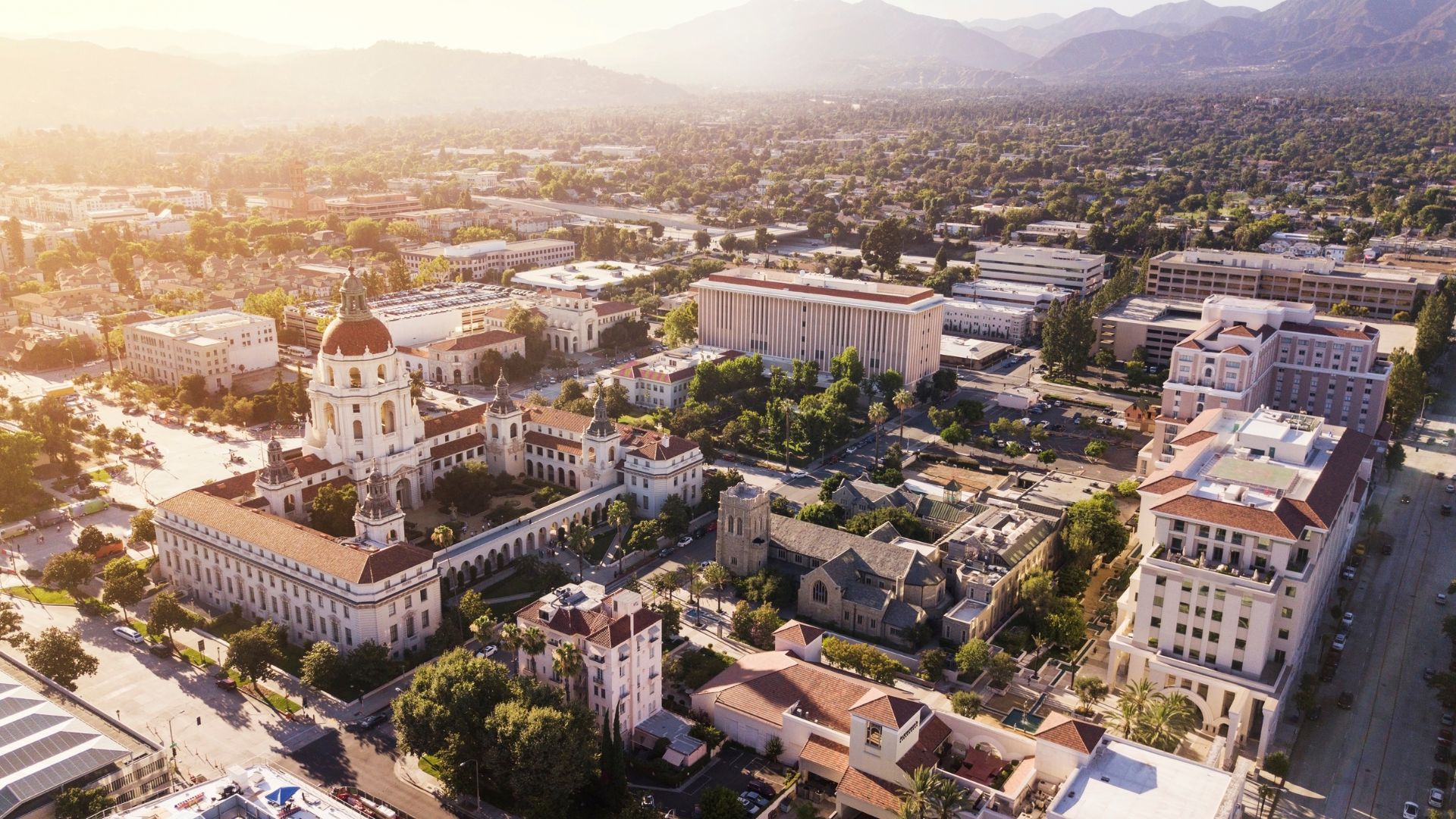
Pasadena’s Old Town: A Historic Beacon Just Outside LA
Even though it’s just ten miles from LA, Old Pasadena feels like a different world. Here, preserved architecture, landmark buildings, and the famous Colorado Boulevard all tell their own stories.
Every corner seems to whisper a bit of Pasadena’s rich past, and honestly, it’s hard not to get swept up in the atmosphere.
Old Pasadena’s Architectural Heritage
Strolling through Old Pasadena, I spot a wild mix of architectural styles. Builders put up many of these places in the late 1800s and early 1900s, and they still stand tall today.
Spanish Colonial, Art Deco, and Victorian influences line the streets, each one adding a different flavor.
Much of Old Pasadena landed a spot on the National Register of Historic Places. Now, those old facades house chic shops, cozy restaurants, and bustling cafés.
Brick buildings with arched windows and decorative cornices catch my eye—they’re like time capsules. Historical plaques offer little clues about what happened behind those doors.
The blend of new businesses inside old bones gives the whole district a charm you just don’t find everywhere in Southern California.
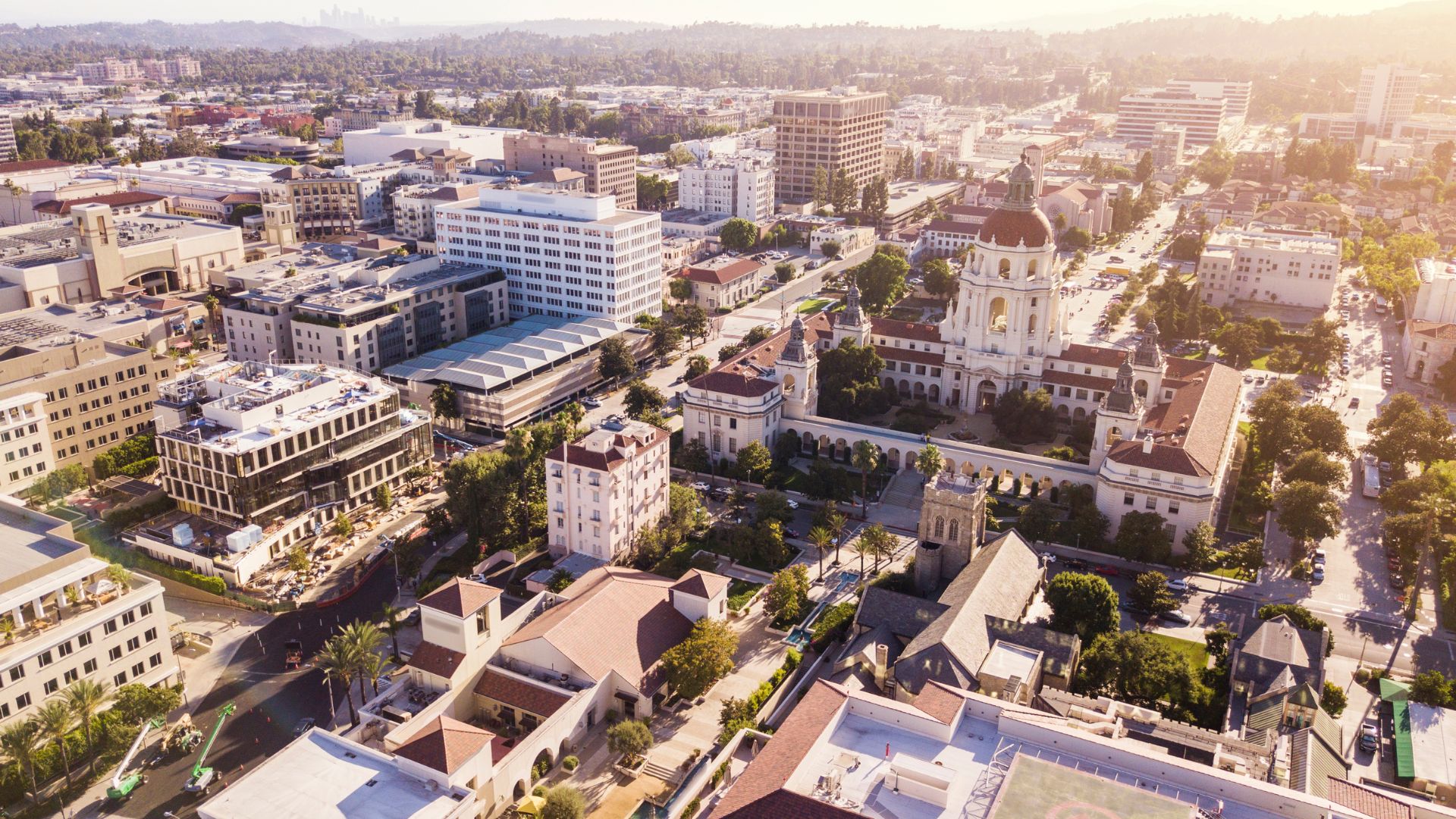
Discovering Landmark Districts and Historic Buildings
Old Pasadena stretches over about 22 city blocks, mostly centered around Colorado Boulevard. The area is a historic district, and you can feel it.
Castle Green stands out—a late 1800s gem with turrets and that unmistakable green trim. I always slow down when I walk by.
Central Park and the old Santa Fe Railway Station at Del Mar add even more layers to the neighborhood’s story. Not every building opens its doors for tours, but honestly, sometimes the exteriors are enough.
Every landmark here feels like a chapter in Pasadena’s story. The preservation is thoughtful, and you can tell both locals and visitors appreciate it.

The Allure of Colorado Boulevard
Colorado Boulevard is Old Town Pasadena’s beating heart. Every January, the Rose Parade takes over, and the world tunes in.
Wide sidewalks and tree-lined stretches make it perfect for a slow stroll.
Shops, galleries, and outdoor cafés fill the restored historic buildings. I see families, students, and tourists wandering between indie bookstores and local eateries.
At night, the boulevard glows with energy. The old architecture and lively crowds create a vibe you can’t really fake.
Exploring this street, I get why history buffs and city explorers keep coming back.
Rose Parade Legacy: Celebrating Pasadena’s Most Iconic Tradition
Each year, Pasadena draws crowds from all over the globe for its legendary Rose Parade. This event brings together vibrant floats, marching bands, and a community spirit that’s honestly infectious.
The Rose Bowl and Tournament of Roses have shaped Pasadena’s identity, offering a peek into the heart of the city.
Tournament of Roses Parade Experience
When I show up for the Tournament of Roses Parade, I’m surrounded by flower-covered floats rolling down Colorado Boulevard.
Some floats are so intricate, made entirely from fresh roses and other natural materials—it’s almost hard to believe. Marching bands from high schools and colleges fill the air with music, and the excitement is contagious.
People start lining the streets before sunrise, hoping for the perfect view. Some even camp out overnight, turning the parade into a giant block party.
Food vendors and local shops open early, ready for the crowds. The buzz is impossible to ignore.
Equestrian groups and spirited performers add their own flair. I love how every year brings new creative twists, but the tradition always shines through.
By January, the parade feels like a fresh start—a symbol of hope and new beginnings.
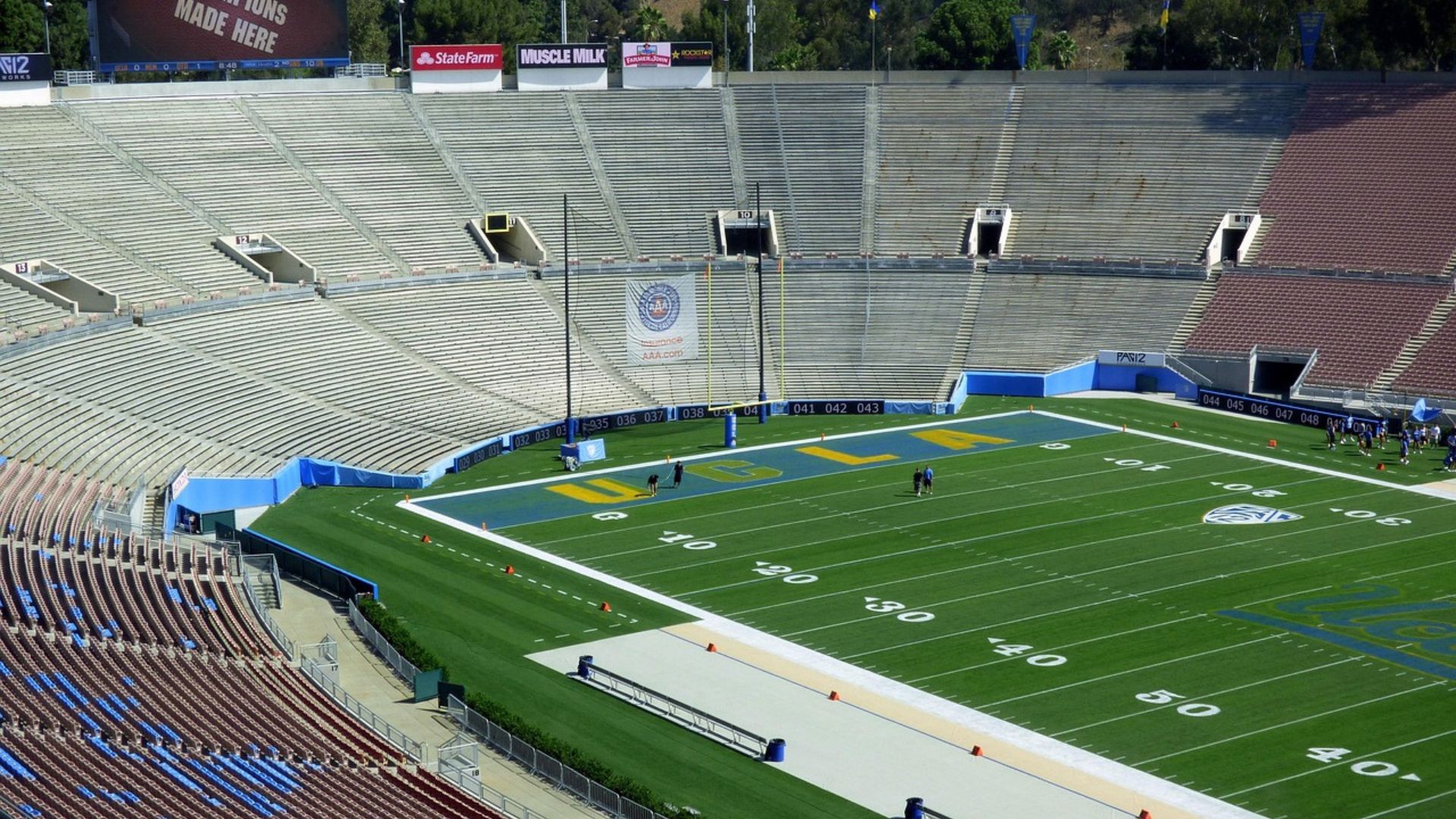
History of the Rose Bowl and Tournament of Roses
The first Rose Parade happened in 1890. Organizers wanted to show off Pasadena’s mild winters and blooming flowers to folks stuck in colder places.
The event quickly grew, and by 1902, they added the Rose Bowl football game to make things even bigger.
The Rose Bowl soon became a legendary college football game. Teams from all over the country dream of playing here on New Year’s Day.
Over the years, the parade and the game started reaching audiences worldwide, putting Pasadena firmly on the map.
The Tournament of Roses Association handles all the planning. Volunteers pour months of effort into every detail.
Their dedication keeps the tradition alive, year after year.
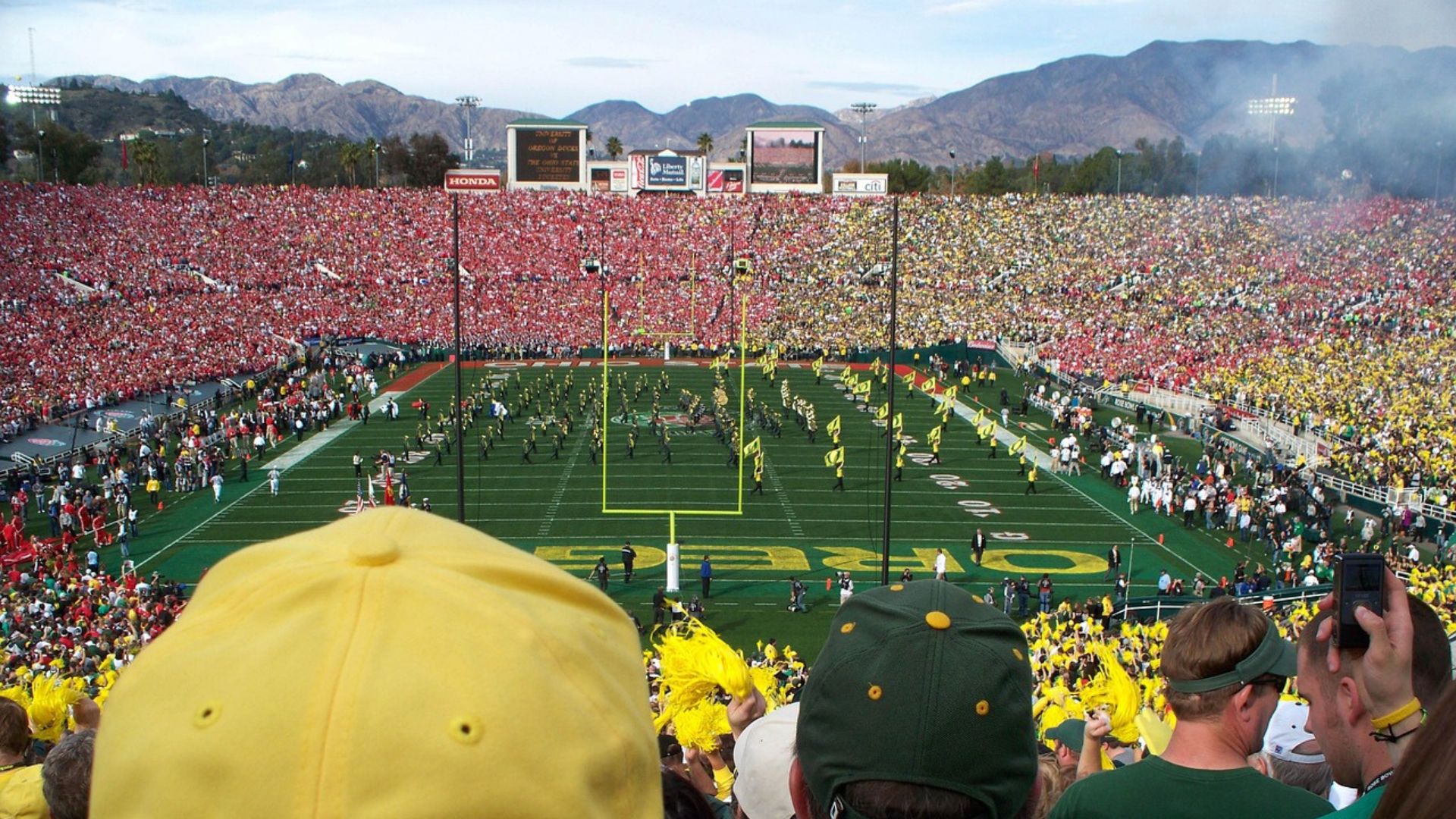
Community Spirit and Neighborhood Pride
The Rose Parade isn’t just for visitors—it means a lot to people who live here. Community groups, schools, and even small businesses all pitch in, whether it’s building floats or organizing events.
Getting involved brings neighbors together. Local organizations hold fundraisers and float-decorating parties in the months leading up to the parade.
This kind of teamwork builds real pride in the town.
During parade season, neighborhoods go all out. Houses and storefronts get decked out, and families gather on lawns to watch.
The tradition pulls the community together and reminds me why Pasadena feels so special each fall and winter.
Architectural Marvels: Styles and Landmarks That Define Old Town
Old Town Pasadena is like an open-air museum, showing off architectural heritage from different eras. Spanish, American, and European influences give the area its unique character.
Spanish Colonial and Mission Revival Gems
I’m always drawn to the Spanish Colonial and Mission Revival buildings in Old Town. You’ll spot stucco walls, red-tile roofs, arched doorways, and shady courtyards everywhere.
The warm, elegant look takes me straight back to California’s early days.
Mission Revival touches bring a sense of nostalgia. Thick walls, terra cotta tiles, and bell-shaped parapets nod to the old Spanish missions.
Many civic and commercial buildings show off these classic details. I often notice the ironwork and carved wooden doors—each building feels like it has its own personality.
This style helps Pasadena keep that timeless, inviting vibe.
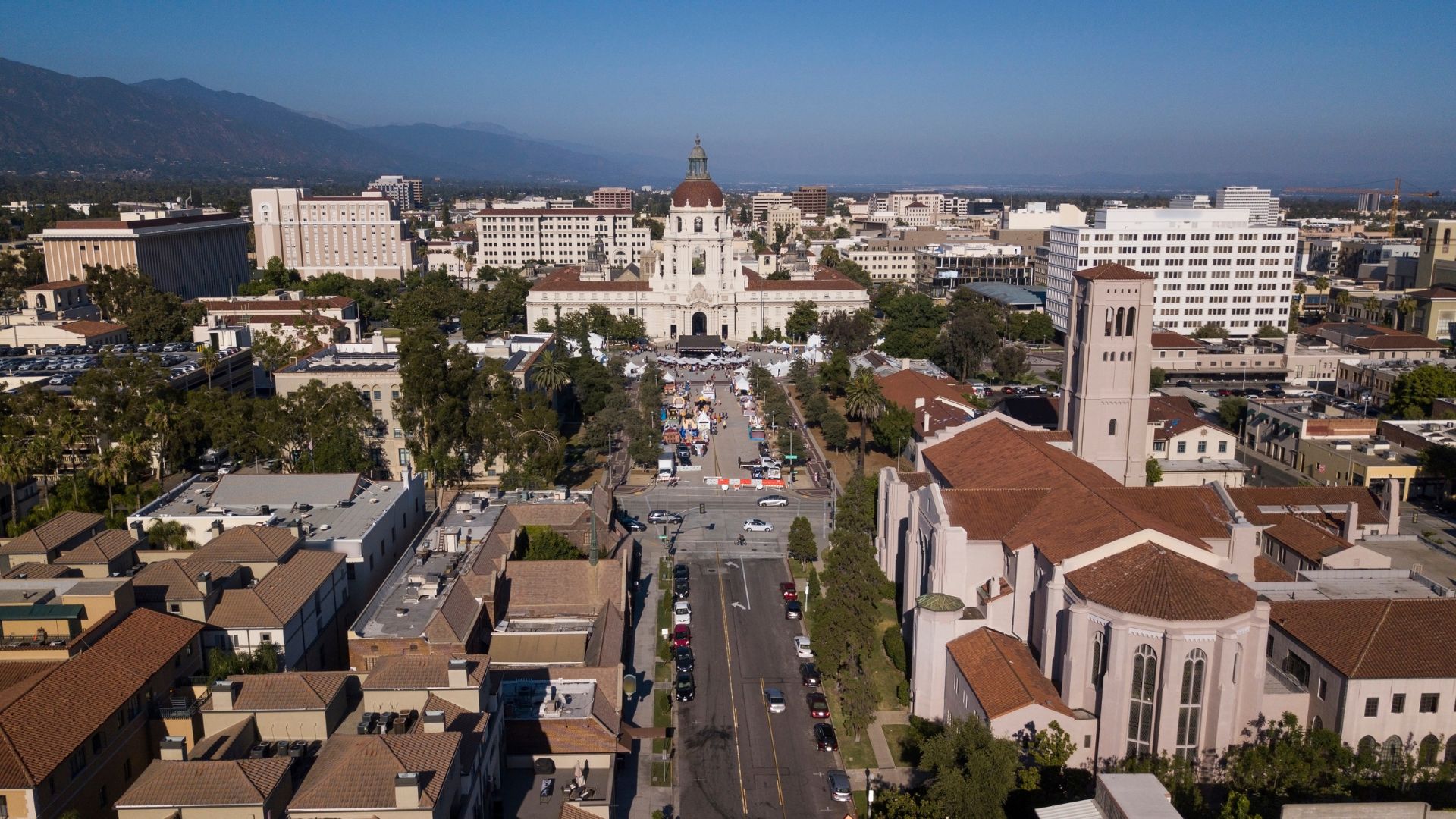
Bungalow Heaven and Craftsman-Style Homes
Bungalow Heaven is hands-down one of my favorite Pasadena neighborhoods. Whole blocks are lined with lovingly preserved Craftsman homes.
Most of these houses popped up between 1900 and 1930. You’ll see low-pitched roofs, wide front porches, sturdy columns, and detailed woodwork.
Key features of Craftsman homes:
- Natural materials like wood and stone
- Exposed rafters and beams
- Cozy, built-in window seats and cabinets
In Bungalow Heaven, lush gardens and mature trees add to the cozy feel. These homes are perfect for families or anyone who loves neighborhoods with real character.
It’s clear Pasadena cares about saving its unique residential architecture.
Italian Renaissance & Beaux Arts Influence
Some of Old Town’s grandest buildings show off Italian Renaissance and Beaux Arts influences. These styles arrived in the late 1800s and early 1900s, and you can feel the ambition behind them.
Beaux Arts architecture impresses with its symmetry, arched windows, stone columns, and sculpted details.
The Colorado Street Bridge, built in 1913, stands out with its elegant arches and old-fashioned lamps. Italian Renaissance Revival buildings add a sophisticated touch, often with decorative stonework and terra cotta accents.
These landmarks connect Pasadena’s story to broader trends you’d see in major cities.
Mid-Century Modern Additions
By the mid-20th century, Pasadena started embracing new design ideas. I spot mid-century modern buildings with clean lines, open layouts, and big glass windows.
They stand in contrast to the older styles, but I think that’s part of the city’s charm.
You’ll find streamlined office buildings, civic spaces, and updated storefronts. The use of steel, glass, and simple shapes points to a more optimistic, forward-thinking era.
These modern touches add variety and show that Pasadena isn’t afraid to mix things up.
Culture, Art, and Urban Sophistication in Pasadena
Pasadena blends classic architecture, public art, and a lively shopping and dining scene. The city stands out with respected museums, historic theaters, and a street culture that’s always buzzing.
Art Walks and Galleries
I love wandering through Pasadena’s galleries and public art spots. Many are tucked inside restored early 20th-century buildings with big brick facades and oversized windows.
The city’s seasonal art walks make it easy to stumble onto both established and up-and-coming artists.
During these events, Old Town basically turns into an outdoor gallery. Sculptures and murals fill the alleys and plazas, and pop-up shows invite you into independent studios.
Meeting artists and seeing such a range of styles—from modern to classic—is always a treat.
If you’re into creativity, these walks and galleries really show off Pasadena’s commitment to art and culture. The pace is relaxed, so you can revisit favorites or get lost discovering hidden gems.
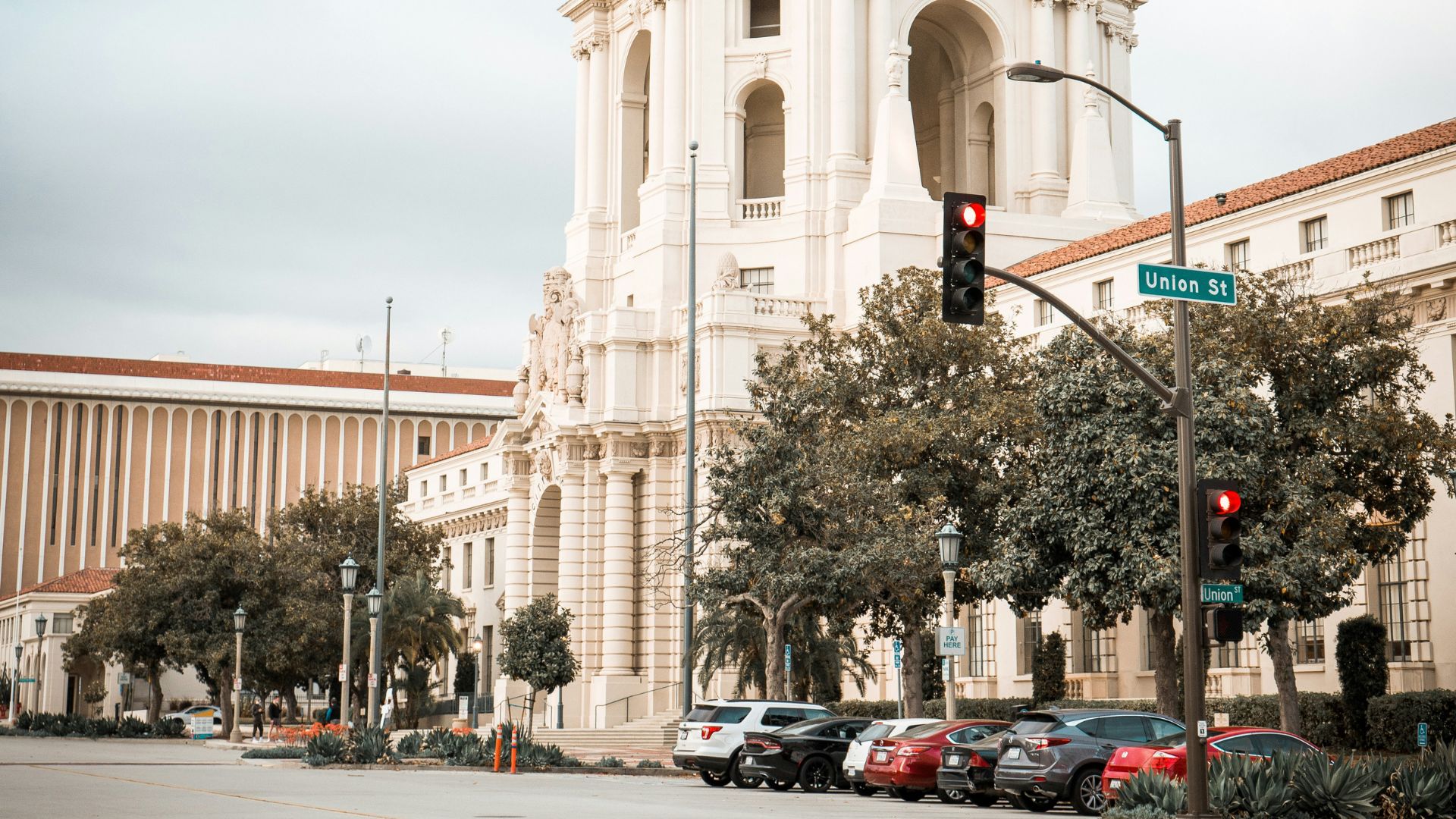
Norton Simon Museum and Pasadena Playhouse
The Norton Simon Museum is a must-visit for me. Its collection includes European masterpieces by legends like Rembrandt and Degas, plus modern works and a peaceful sculpture garden.
The museum’s layout is calm and welcoming—each room is quiet and well-lit.
Nearby, the Pasadena Playhouse is a historic spot for theater lovers. Since the 1920s, it’s hosted classic plays, musicals, and original productions.
The building, with its Spanish-style details, feels both historic and cozy.
I appreciate the range of shows, from comedies to dramas. It’s easy to grab tickets and spend an evening soaking up local talent right in the heart of the city.
Vibrant Dining and Boutique Shopping
Old Town Pasadena mixes rich history with a lively urban energy. I’ll usually start my day with coffee at a corner café, then wander streets lined with boutiques and offbeat shops.
Plenty of stores sell locally made goods, vintage treasures, and gourmet treats.
Around Colorado Boulevard and the nearby blocks, dining options go from street food to upscale restaurants. I find everything from Asian fusion and Mediterranean to classic American comfort food.
Outdoor patios are perfect for soaking up that SoCal sun.
For gifts or a special meal, Pasadena offers both familiar chains and independent shops that feel truly unique. The variety keeps each visit fresh, whether you’re hunting for fashion, art, or just a killer dessert.
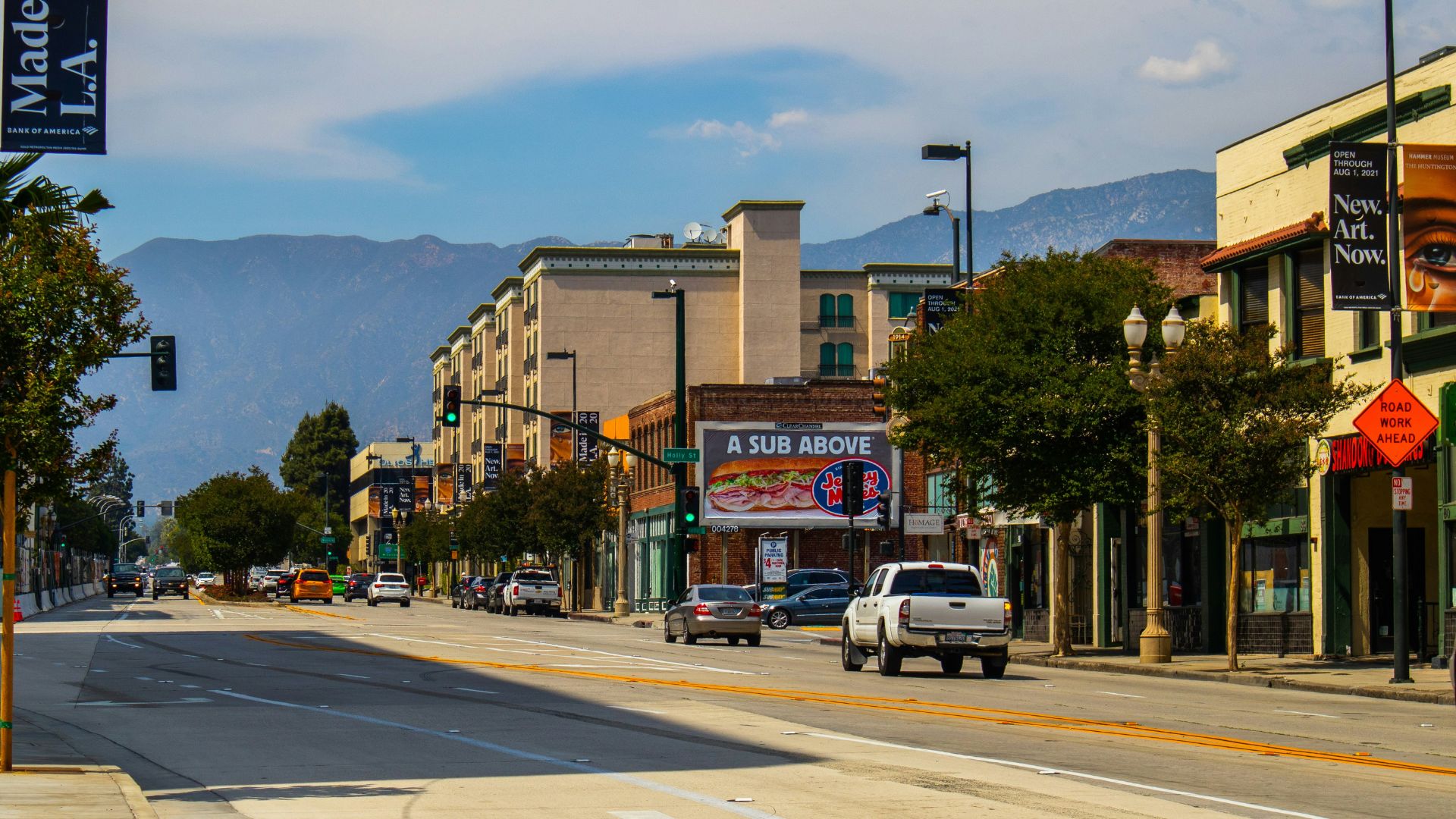
Landmarks, Leisure, and Outdoor Life in Old Town
Old Town Pasadena isn’t just about shopping or grabbing a bite. There’s something about its historic sites, open spaces, and that easy access to nature that just pulls you in. Every landmark here seems to have its own story, and honestly, that’s what keeps things interesting.
Colorado Street Bridge and Hotel Green
The Colorado Street Bridge always catches my eye with those graceful arches. I can’t help but pause for the views over the Arroyo Seco, especially when the sun starts going down. Built back in 1913, the bridge is a local icon you can spot from a distance.
Right next to it, the Hotel Green stands tall, its deep red brick and ornate details hinting at a more glamorous era. This place used to be the height of Pasadena’s luxury hotel scene in the early 1900s. Even though it doesn’t host guests anymore, I still find myself stopping on the sidewalk just to take it all in.
Quick facts:
| Landmark | Year Built | Notable Feature |
|---|---|---|
| Colorado Street Bridge | 1913 | Elegant Beaux-Arts design |
| Hotel Green | 1899 | Historic urban landmark |
Strolling the Pasadena City Hall & Civic Center
Pasadena City Hall looks like it belongs in a European painting, with that domed tower and the tile roof. It really anchors the Civic Center, drawing a mix of visitors and folks from around town. I love wandering under the arches, listening to the fountains, and just soaking up the calm gardens.
You’ll also find the public library and the Civic Center Financial building nearby. These spots show how much Pasadena cares about design and public spaces. The area always feels organized and easy to enjoy, so it’s perfect for snapping a few photos or just taking a breather.

Natural Beauty: Arroyo Seco and Outdoor Activities
You don’t have to leave the city to get a dose of nature. The Arroyo Seco winds right through, with trails that are perfect for a jog or an easy bike ride. Oak and sycamore trees line the banks, and I often spot families picnicking or folks birdwatching.
Close by, the Rose Bowl stadium brings its own energy to the area. Sure, it’s famous for football, but the three-mile loop around it is always busy with runners, dog walkers, and pretty much anyone who wants fresh air. There’s just something about the mix of green space and city views that makes this place a favorite for outdoor time.
Popular activities in Arroyo Seco:
- Walking and jogging
- Biking
- Outdoor yoga
- Birdwatching
The Gamble House Legacy
The Gamble House is a real gem for anyone who loves Craftsman architecture. David and Mary Gamble, from the Procter & Gamble family, had it built in 1908, and the details—inside and out—are stunning. I remember being wowed by the simple lines and the way the woodwork feels so warm and lived-in.
Today, the house operates as a museum. You can take a guided tour and see the original furnishings, which is a treat if you’re into design or history. It sits in a quiet, leafy neighborhood, and standing there, it’s easy to imagine what Pasadena felt like in its early days.
Education and Innovation: Pasadena’s Enduring Influence
Pasadena’s schools and creative spirit have shaped more than just the city itself. The mix of tradition and forward-thinking here still drives research, art, and technology across Southern California. There’s just something inspiring about the way this place balances old and new.
Discovering Caltech’s Impact
Whenever I stroll through Caltech’s campus, I can’t help but notice how the place feels both wide open and laser-focused at the same time. There’s a sort of quiet energy here that’s hard to describe.
People all over the world know Caltech for its breakthroughs in science and engineering. Honestly, it’s a little humbling to think about how many Nobel Prize winners have walked these same paths.
Some of the brightest minds have tackled big problems here, and their research has sparked inventions that changed space travel, earthquake safety, and even medical technology. You can almost feel the history in the air.
Key Caltech Contributions:
| Field | Notable Achievement |
|---|---|
| Space Exploration | Jet Propulsion Laboratory (JPL) |
| Research | DNA structure studies |
| Engineering | Seismic building design |
Caltech teams up with NASA and local companies to turn cutting-edge ideas into practical solutions. You’ll find its influence everywhere in Southern California, quietly shaping the future and inspiring new generations of scientists, engineers, and curious thinkers.

